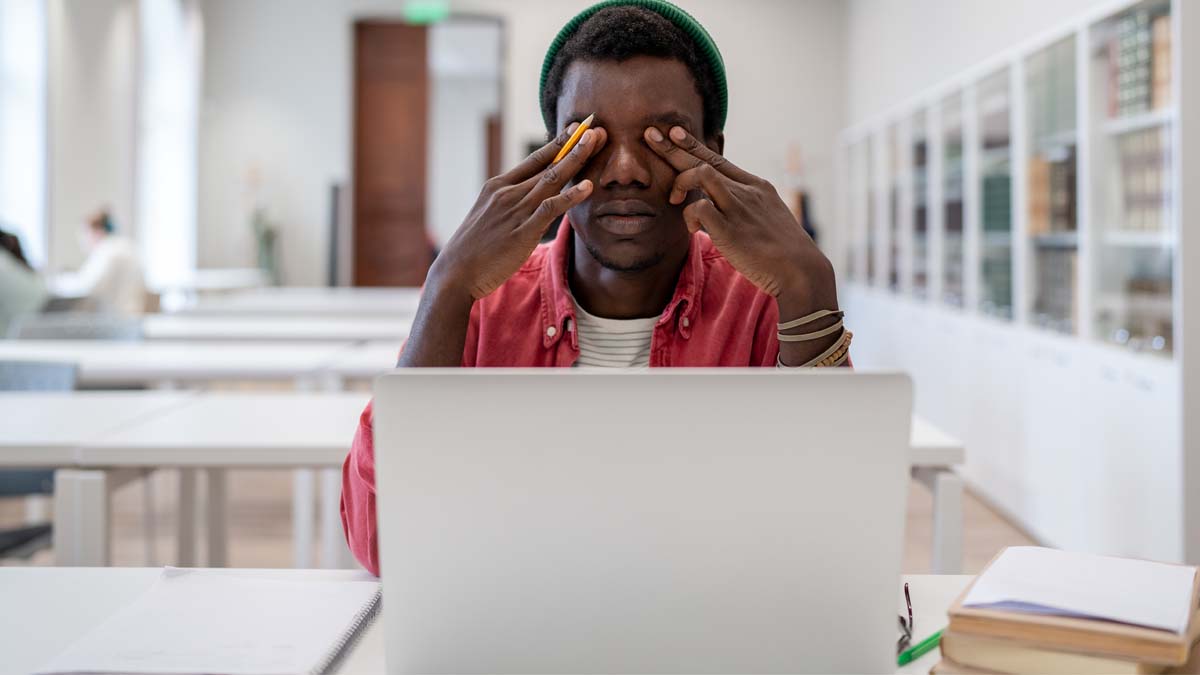Although his official position is security/customer service with Prisma Health in Greenville, Harold Moore spends seven to eight hours every day in front of a computer screen summarizing reports, creating spreadsheets and bar graphs for internal use and submitting daily work orders.
And every day he wonders when he is going to need new glasses.
“In my three years in this job, I’ve had to get three new pairs due to my vision regularly needing new lens prescriptions,” Moore said. “Doctors have told me I have cataracts and severe astigmatism and that the constant glare of the computer screen could exacerbate my condition.”
Moore’s condition, known as digital eye strain, currently affects 2 out of every 3 Americans.
And across the globe, health professionals are warning that as use of computers, cellphones and other electronic devices continues to increase, digital eye strain is not only a major health concern, it is now in the position – depending on more scientific data – of becoming a silent pandemic for millions of people worldwide.
“Digital device usage has increased substantially in recent years across all age groups,” said Dr. Amy Sheppard, senior lecturer at Aston University’s School of Optometry in Birmingham, England. “Extensive daily use for both social and professional purposes is now normal.”
She added that DES, also known as computer vision syndrome, encompasses a range of ocular and visual symptoms and that its prevalence may be “50% or more among computer users.” Such evidence is not yet fully documented.
Dr. Michael Chiang, an ophthalmologist director of the National Institutes of Health National Eye Institute since 2020, said that while too much screen time could be the cause of DES, the matter needs further research.
“There’s not really a whole lot of firm medical evidence that screen time causes nearsightedness or eye problems,” Dr. Chiang said. “On the other hand, there is some speculative evidence that the more time you spend reading up close and the less time you spend outside, the more kids’ eyes tend to become nearsighted.”
The American Academy of Ophthalmology further reports: “There is no scientific evidence that the light coming from computer screens is damaging to the eyes.”
However, the American Optometric Association is viewing DES from the standpoint that screen time in any form has always contributed to eyestrain and that the incidence of DES is going to rise as screen time increases. Currently, American workers average seven hours a day in electronic screen time.
And with more people working from home and attending classes, webinars and consultations online, Dr. Sheppard and others believe that electronic and digital gadgets are the “sole contributor” of DES and computer vision syndrome.
“CVS was reported to be 54.6% in call center operators in Sao Paulo, Brazil,” said Mario Ferreira Júnior in a 2023 AOA report on computer vision syndrome. “Studies have shown positive correlation between symptom score reported and the number of hours in front of the computer.”
Regardless of which camp science ultimately favor, each side offers comparable solutions and preventives, which include:
• For every 20 minutes of screen time, take a 20-second break to view something 20 feet away.
• Wear contact lenses properly.
• Schedule regular eye exams, and check for both nearsightedness and farsightedness.
• Take medications as prescribed by your ophthalmologist.
• Have surgery when necessary.
“Four of my five kids wear glasses,” said Greenville resident Frankie Felder. “But right now, I’m not really concerned that computer screen time will make their conditions worse.”
And she could be right – DES is the newest but not the only reason to do something about tired, aching eyes. For example, eyestrain in ancient Egypt often meant a dose of turtle bile in both eyes. In ancient Greece, people used cabbage juice for relief, while during World War II, U.S. production shift workers were advised to wear Tillyer lenses to protect against that exhaustive, nerve-racking “4 o’clock eye fatigue.”
All of this happened far before screen time was an issue.
Your best bet? Know your own eyes and seek professional relief.
“Although DES affects a huge number of individuals, its precise physiological basis remains unclear,” Dr. Sheppard said. “To provide optimum patient care related to the condition, it is essential that eye-care practitioners are well informed regarding DES and the growing evidence base in this field.”
By L. C. Leach III
